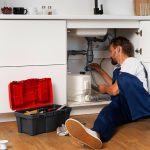There are several components of a boiler that helps the boiler operate in the most efficient manner possible. Knowing these components and understanding why these components are important will also help you understand how your boiler operates. One of the most important components that a boiler needs is an expansion tank. When we think of an expansion tank the first thing that comes to our minds is an extra fuel or water tank. The expansion tank serves a purpose that is much different than what we think. In the next few paragraphs we will look at the expansion tank to understand the main task they perform.
To maintain even water pressure throughout the inside a boiler, the tank will need a cushion of air. Older boilers left an empty space at the top of the water tank. The empty space led to rusting because it allowed too much oxygen to enter the system. This oxygen would help moisture to accumulate inside the tank allowing rust to form. In some instance the rusting would occur all the way through the tanks exterior walls. The solution to the problem was to add the expansion tank, a separate unit sitting above the main tank that would contain an air cushion but not allow that air to seep back into the tank itself.
The expansion tank is usually placed right over the main tank. It is a small cylindrical object with a pressure gauge attached to it to help monitor pressure inside the expansion tank. Inside is a flexible, waterproof diaphragm. On one side of the diaphragm is a compartment connected to the main tank that allows in water. On the other side is air connected to an air valve and pressure gauge. When the water pressure increases it will press against the diaphragm, which stretches and relieves the pressure. Air then enters the other chamber to push back against the water to restore the standard pressure which is usually around 15 to 30 psi.
If the expansion tank is damaged such as tears or leaks in the diaphragm, it will allow the pressure in the tank to increase to dangerous levels. High water pressure will eventually cause leaks to the connectors and overload the relief valve in the boiler, increasing boiler pressure can cause damage fitting control as well as the relief valve. Before you turn on your boiler each year you should inspect the entire system to make sure pipes, fittings and other components are not leaking and are working in proper order.
If you should you notice leaks occurring in your boiler system, a faulty expansion tank might be problem. You can go to HVACRsupplyNOW.com they have a large selection of expansion tanks for your every need, they even have an expansion tank sizing tool if you’re not sure what size tank you need for your application.






Leave a Reply
You must be logged in to post a comment.